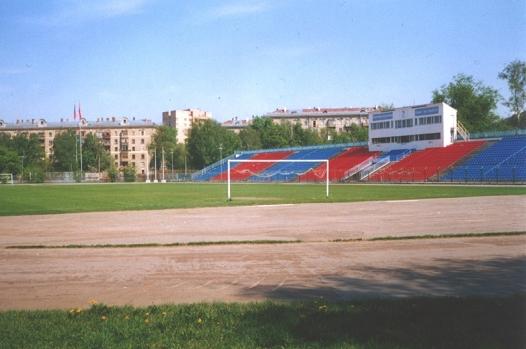CSKA was formed in 1923, it was then called "The first sports organization of the Red Army" Experimental military sports playground of Vsevobuch "." The main areas of training were important sports for the army: shooting, skiing, track and field athletics, boxing, football, basketball and gymnastics. In 1953, the Central Sports Club of the Ministry of Defense was created on the basis of this organization, and in 1960 it was renamed the Central Sports Club of the Army (CSKA).
History of CSKA Stadium
The first CSKA stadium was opened in Moscow in 1961 as part of the Peschanoe Universal Sports Base and was named after Grigory Fedotov, the famous football player who scored 100 goals in the USSR Championship. The stadium was small, its arena accommodated 11 thousand spectators. In addition, there were no lighting masts on the football field and therefore games there could only be held in the daytime.

CSKA Stadium was in close proximity to the airfield at the time on the Khodynsky field. Lighting masts in the stadium could become an obstacle for take-off and landing aircraft, so the stadium was built without overhead lighting. Because of this, matches at CSKA Stadium were rarely held, mainly the arena was used by the backup team. For the audience, the stadium was also not very convenient - instead of seats, wooden benches were installed here. In 1997, the stadium was reconstructed, after which its capacity increased, instead of benches for spectators, plastic seats were installed. But all the same, matches of the major league teams were held on it extremely rarely. In 2000, the CSKA stadium was closed and demolished.
Construction of a new complex
Currently, the construction of a new stadium CSKA. Initially, it was planned to put it into operation in 2008, then the date was postponed several times due to disputes over the documentation. The deadline when the builders plan to commission the new CSKA stadium is 2013. It should be an ultramodern sports complex. Rectangular in shape, unlike all other sports arenas, it will be deprived of "dead zones" for spectators. It is planned to place offices, studios and cafes in corner buildings. One corner tower should rise above the roof of the stadium, and in shape will repeat the UEFA Cup, won by CSKA players in 2005, with a giant
soccer ball at the top.
From the offices that will operate in the tower, magnificent panoramic views of Moscow and the CSKA stadium itself will open. Moscow needs modern sports facilities that meet the latest FIFA requirements. At the same time, it is especially important to preserve the history of
sports facilities operating for many years in the city, such as the CSKA stadium, Dynamo, Lokomotiv. The main difficulty in the reconstruction of these sports fields is that residential areas are located next to them.
Designers on a relatively small plot of land need to place a complex of offices, hotels, think over access roads and the location of the parking lot. According to experts, the new CSKA stadium will become a unique architectural structure and the most modern sports arena.